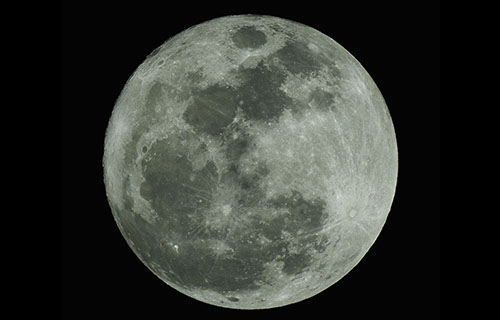Though data from orbiters have suggested presence of вады ice, the exploration of месяцовы craters in the polar regions of moon has not been possible due to the absence of suitable technology to power месяцовы rovers in the perpetually dark, super cold areas having a temperature of –240°C. The project PHILIP (‘Powering rovers by High Intensity Laser Induction on Планеты’) commissioned by European Прастора Agency is ready to develop prototypes that would provide laser power to these rovers in an effort to explore evidence of existence of вады in these craters.
месяц не круціцца вакол сваёй восі, калі круціцца вакол зямлі, таму іншы бок Месяца ніколі не бачны з зямлі, але абодва бакі атрымліваюць два тыдні сонечнага святла, а затым два тыдні ночы.
However, there are sunken areas in craters situated in the polar regions of moon that never receive sun-light because low angle of sunlight that leave the deep interiors of the craters in shadow forever. This perpetual darkness in the polar craters make them super cold in the range of –240°C corresponding roughly to about 30 Kelvin i.e. 30 degrees above absolute zero. The data received from the месяцовы orbiters of ESA, ИОКИ і НАСА have shown that these permanently shadowed areas are rich in hydrogen, suggestive of presence of вады (ice) in these craters. This information is of interest for science as well as a local source of ‘вады and oxygen’ for future moon human habitation. Therefore, there is a need of a rover that could go down to such craters, drill and bring sample for testing to confirm presence of ice there. Given месяцовы rovers are usually solar powered, this has not been achieved so far because it has not been possible to ensure power supply to rovers while it explores some of these dark craters.
Адным з меркаванняў было наяўнасць атамных марсаходаў, але гэта было прызнана непрыдатным для даследавання лёду.
Зыходзячы з паведамленняў аб выкарыстанні лазера для сілкавання беспілотных лятальных апаратаў, каб трымаць іх у паветры на працягу больш доўгага часу, праект Філіп (‘Powering rovers by High Intensity Laser Induction on Планеты’) was commissioned by European Прастора Agency to design a complete з лазерным харчаваннем пошукавая місія.
The PHILIP project is completed now and the ESA is one step closer to powering месяцовы rovers with lasers to explore the super cold dark месяцовыя кратэры каля слупоў.
ESA would now begin to develop prototypes for exploring the dark craters that would provide evidence for confirmation of the presence of вады (ice) leading to realisation of human dream to inhabit this satellite.
***
Крыніцы:
Еўрапейскае касмічнае агенцтва 2020. Дазвол і падтрымка / Касмічная інжынерыя і тэхналогіі. Лазерны марсаход, каб даследаваць цёмныя цені Месяца. Апублікавана 14 мая 2020 г. Даступна ў Інтэрнэце па адрасе http://www.esa.int/Enabling_Support/Space_Engineering_Technology/Laser-powered_rover_to_explore_Moon_s_dark_shadows Доступ 15 мая 2020 г.
***






































